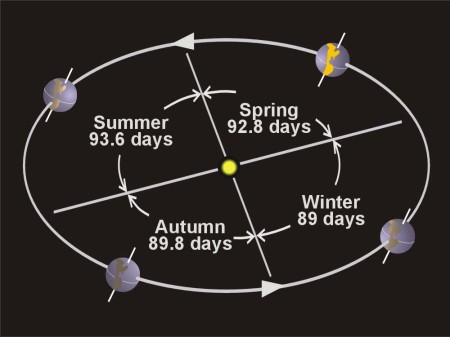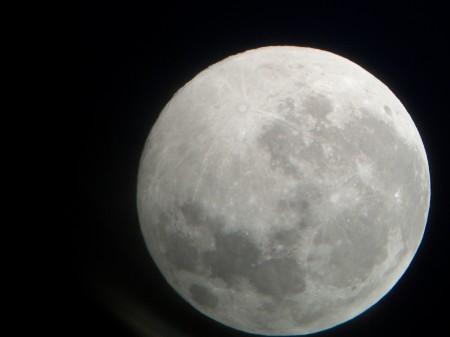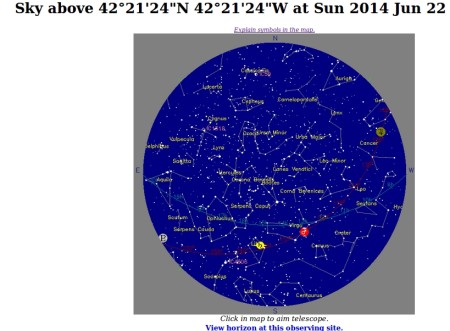Some of you who took the Night Sky Conservation Course this Spring had the pleasure of meeting our assistant Andrew Lindstrom. Andrew has remained connected to NSC as a remote correspondent in Yellownknife NWT. Before he left for Yellowknife, he managed to figure out a way to safely stow a mirror cell of our 8″ Dobsonian Skywatcher Telescope, and crate the tube and rocker box.
Due to his change in latitude and the onset of Summer Solstice, Andrew currently has little opportunity to see starlight (other than solar) at night. From the above image, we can see that the Sun skims above the horizon in a small circle at this time of year . Here is a map of Sky above 62°27’N 114°21’W
Since there is a YellowKnife ClearSky Calender http://cleardarksky.com/c/YllwknfNWTkey.html , it is easy to select a link to a simple Sky Map that can be customized as above.Sky Chart for Yellowknife.
What we also learn ( Rise and Set times for the Sun in Yellowknife) ) – that the Sun, at a declination of 23.5 degrees at Summer Solstice rises at 03:40 and sets at 23:39… (Nearly a midnight sun!). So Andrew has to wait until the day/night situation is quite reversed; he looks toward winter to receive some photons from stars and galaxies. In winter, at that latitude, the Sun is not high in the sky, and stays low or below the horizon for many hours.

Nevertheless, Andrew has been busy capturing images of artistic and astronomical phenomena at his location.

Earth shadow was observed by our class a couple of years ago:. See https://millstonenews.com/2012/08/moonshine-and-earth-shadow-two-posts.html

In May this year (2014), Andrew’s first assignment on this scope was to find the moon and planets in our Night Sky Viewing session and share it with the class. He is using the same skills up North, waiting for the winter solstice to grace his sky with Night Sky Celestial Wonders.




